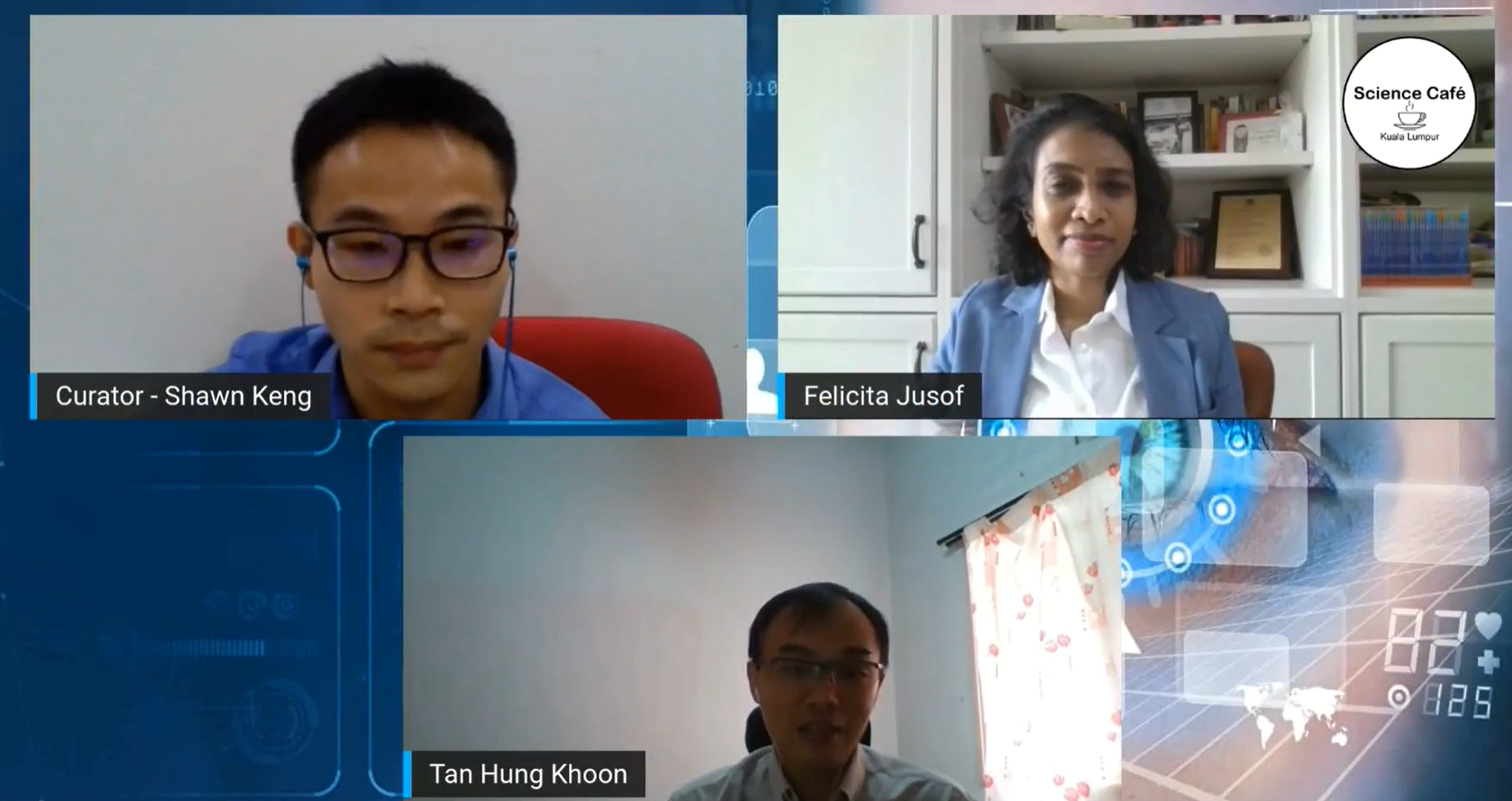

Dr Tan (bottom) during the Q&A session
Ever wonder how your phone's Face ID works or how your shopping app can
search your shopping items based on an image? The Science
Cafe KL in collaboration with the ASEAN
Academy of Engineering and Technology (AAET) organised a
talk series throughout 2021 featuring speakers from different fields. Faculty
of Information and Communication Technologies (FICT) Assoc
Prof Ts Dr Tan Hung Khoon was invited as a speaker to conduct his sharing
titled “Deep Learning: Bringing Vision to Computers” on 27 March 2021 via
Facebook Live.
The success of AlexNet in 2012 marks the beginning of a deep learning
revolution in computer vision. Over the years, deep neural networks have
improved many vision-related tasks such as image classification, action
recognition in videos and thoracic disease classification. For some simple
vision tasks, deep neural networks have even achieved super-human
performance. Meanwhile, the rate of adoption of these new techniques has
proceeded at an unprecedented speed. In this talk, Dr Tan shared how
artificial intelligence (AI) has brought vision to computers from a
historical perspective, and the capabilities and limitations of modern
vision systems.
In his sharing session, Dr Tan spoke about the concept of computer vision,
deep learning, what drives deep learning, how computer learning helps people
in many vision-related tasks such as image classification, action
recognition in videos, and thoracic disease classification and other related
topics.
He said, “Computer vision is the science that makes computer see and the
dominant method used is deep learning. Learning is the process of building
computer systems that learn patterns from data and these patterns can be
used to make decisions. Deep refers to the hierarchical learning algorithm
with many ‘layers’ loosely inspired by the brain. Deep Learning, or neural
network can be used to solve different tasks such as computer vision issue,
speech recognition and robotics natural language processing.”
“Data is the new oil of the century as it is the main driver for powering
the AI systems in today’s world. Better high-quality data will deliver a
robust and effective AI system.,” added Dr Tan.
He further shared some AI projects done by UTAR students and staff such as thoracic disease classification, plant disease detection and crime scene detection. “We also collaborated with the industry to come up with “Meeting room activity classification”. It can identify the activities in the meeting room and provide analytics for the I.T. department on the best way to optimise the usage of the room.”
.png)
Dr Tan explaining how to de-bias AI
Dr Tan expressed, “The biggest danger we have towards the society is job
market. AI is going to replace jobs that are easily automated, repetitive,
routine and requires low skill. The kinds of job that would be in demand are
those with knowledge-based, strategic, skill-based and human-oriented. Thus,
we need to continuously up-skill ourselves to remain relevant and avoid
being replaced by AI systems.”
Dr Tan received his postgraduate education in the City University of Hong Kong where he developed his interest in multimedia computing and computer vision. His current research focuses on activity recognition and modelling of object interactions in videos. Recently, he has been working on developing vision systems for the blind.
Wholly owned by UTAR Education Foundation Co. No. 578227-M LEGAL STATEMENT TERM OF USAGE PRIVACY NOTICE